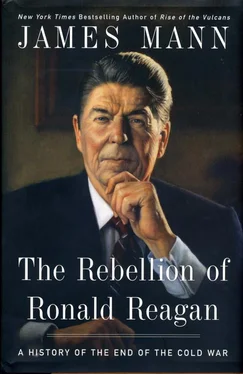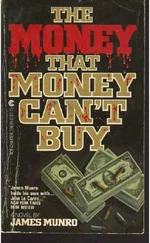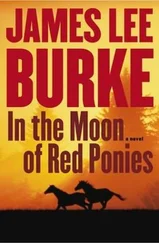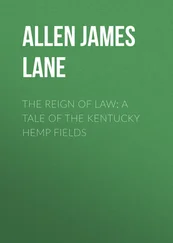-2-
AN ARMS DEAL AND ITS OPPONENTS
Reagan obtained the breakthrough he needed for a Washington summit when Gorbachev made a significant concession on arms control in early 1987.
The two leaders’ turbulent meeting at Reykjavik the previous October had ended without agreement. Gorbachev had called for far-reaching reductions in missiles or nuclear warheads; he had also proposed that the United States and the Soviet Union eliminate their intermediate-range missiles in Europe. Reagan had responded with enthusiasm. It turned out, however, that all of the Soviet leader’s proposals were contingent on American willingness to restrict spending and research for the Strategic Defense Initiative, the president’s new missile-defense program. Reagan refused; Reykjavik came unglued.
On February 28, 1987, Gorbachev suddenly announced that the Soviet Union would drop the condition that a deal banning intermediate-range missiles in Europe would have to be part of a larger package. Instead, Gorbachev said, he was willing to go along with a separate deal on this issue “without delay,” thus abandoning the effort to get Reagan to restrict work on missile defense beforehand. Soviet officials explained that Gorbachev and his aides wanted to finish at least a limited arms-control agreement while Reagan was in office. They did not want to wait another two years for a new American president; Gorbachev needed to ease tensions with the United States more quickly so that he could proceed with his reforms inside the Soviet Union. 1
“We start from the assumption that as difficult as it is to conduct business with the United States, we are doomed to it. We have no choice,” Gorbachev had told other Soviet leaders, according to the transcripts of a Politburo meeting two days earlier. “Our main problem is to remove the confrontation. That is the central tenet of our entire foreign policy.” 2
Gorbachev’s announcement could not have come at a better time for Reagan. He had just replaced his White House chief of staff and was facing widespread skepticism that he could accomplish anything for the remainder of his term. Reagan had been avoiding the press since the beginning of the Iran-Contra scandal, but he rushed to the White House briefing room to praise Gorbachev’s new offer.
On a visit to Moscow six weeks later, Shultz told Gorbachev that the Reagan administration was ready to move ahead with the treaty banning intermediate-range missiles in Europe. They began talking about the details, and Gorbachev suggested that he could sign the deal on a trip to the United States. Talking to Reagan over a secure phone from Moscow, the secretary of state reported happily on the prospects for a summit. “He talked about fall to the end of the year,” Shultz told Reagan. When Shultz returned to the United States, he flew immediately to the Reagans’ ranch house outside Santa Barbara to tell them firsthand about Moscow. 3
However, at this point Reagan began to confront growing resistance to the prospect of a treaty, both inside the United States and in Europe.
The opposition in Washington was led by the veterans of America’s Cold War diplomacy: Richard Nixon, Henry Kissinger, and Brent Scowcroft. These leading figures of the Republican foreign-policy hierarchy had been attacking the president with increasing intensity since he and Gorbachev had talked at Reykjavik about abolishing nuclear weapons. They didn’t like what was being said about a treaty banning missiles in Europe. “If we strike the wrong kind of deal, we could create the most profound crisis of the NATO alliance in its 40-year history,” wrote Nixon and Kissinger in the Sunday Washington Post less than two weeks after Shultz returned from Moscow. It was the grave risk of such a treaty, they said, that had caused them to join together on a public issue for the first time since Nixon’s resignation. 4
Two days after this article, Nixon made his secret visit to the White House. Reagan had invited him for talks about the prospects for a summit and an arms-control agreement. Nixon’s memo to himself from that session shows that within minutes after he sat down with Reagan, he began to call into question the administration’s negotiations with Gorbachev. Nixon challenged what he later called “the Reagan-Shultz position”—that is, their eagerness for an agreement limiting nuclear weapons. 5
The thrust of Nixon’s message was that Reagan should be more hawkish in dealing with Gorbachev. At one point, Nixon told Reagan that a deal with the Soviets would not really help Reagan’s standing with the American public. After all, said Nixon, polls show that military action helps a president far more than diplomacy does. Recalling this part of the conversation in his private memo for his own records later that night, Nixon wrote: “I pointed out that many people felt my popularity had gone up because of my trip to China. In fact, it had improved only slightly. What really sent it up was the bombing and mining of Haiphong.” 6
Nixon argued that a summit in Washington should focus not on arms control but other issues, such as Afghanistan and Central America. He also criticized the details of the arms-control agreement that Reagan and Shultz were envisioning. Gorbachev had proposed a deal in which the two superpowers would remove all intermediate-range missiles from Europe but still keep one hundred of these missiles elsewhere. As a result, the Soviet Union would have maintained intermediate-range missiles in Asia. Nixon argued that Reagan should be able to persuade Gorbachev to give up the missiles in Asia too.
Nixon’s broader complaint was that any agreement to remove these missiles from Europe would leave the Soviet Union with a large advantage in conventional military forces. Reagan pointed out that in his own face-to-face conversations with Gorbachev in Geneva and particularly Reykjavik, the Soviet leader had seemed sincere in his desire to reduce Soviet military power, including conventional forces. Gorbachev had said he didn’t want to continue the unending arms race between the two superpowers. Nixon thought Reagan was naïve to believe in Gorbachev. He wrote in his subsequent memo that this part of his conversation with Reagan was “somewhat disturbing.” 7
Reagan’s high-level critics were much more enthusiastic than he was about the value of nuclear weapons. American nuclear weapons were a key element to the American strategy of preventing Soviet aggression, and their supply should not be reduced, they argued. The principal exponent of this point of view was Brent Scowcroft, who had been Kissinger’s aide and President Ford’s national security adviser.
“It is not self-evident that fewer nuclear weapons ipso facto represent a better strategic situation,” wrote Scowcroft in the spring of 1987. “We have for some 40 years relied on the threat of nuclear weapons to keep the Soviet hordes at bay.” Scowcroft particularly opposed removing intermediate-range missiles from Europe. These missiles could deliver nuclear weapons deep into Soviet territory, Scowcroft argued, and their presence reassured Europe that the United States would come to its defense. 8
In an interview nearly two decades later, Scowcroft continued to believe he had been correct. The American intermediate-range missiles in Europe “were what we relied on in case of an attack, to cut the Soviet front-line troops from their supplies,” Scowcroft said. “What we needed to do was to cut the Soviet supply lines, to attenuate the force of any attack.” The intermediate-range missiles gave the Americans that capacity, Scowcroft argued, and “it was wrong to negotiate them away.” 9
Reagan and Shultz pointed out that the United States would still be able to protect Europe with the many hundreds of nuclear weapons it could use from bombers or from American ships at sea. The treaty under discussion with Gorbachev would not affect those other nuclear weapons at all; it would merely cover the intermediate-range missiles in Europe. Still, the attacks on the proposed deal did not abate.
Читать дальше












